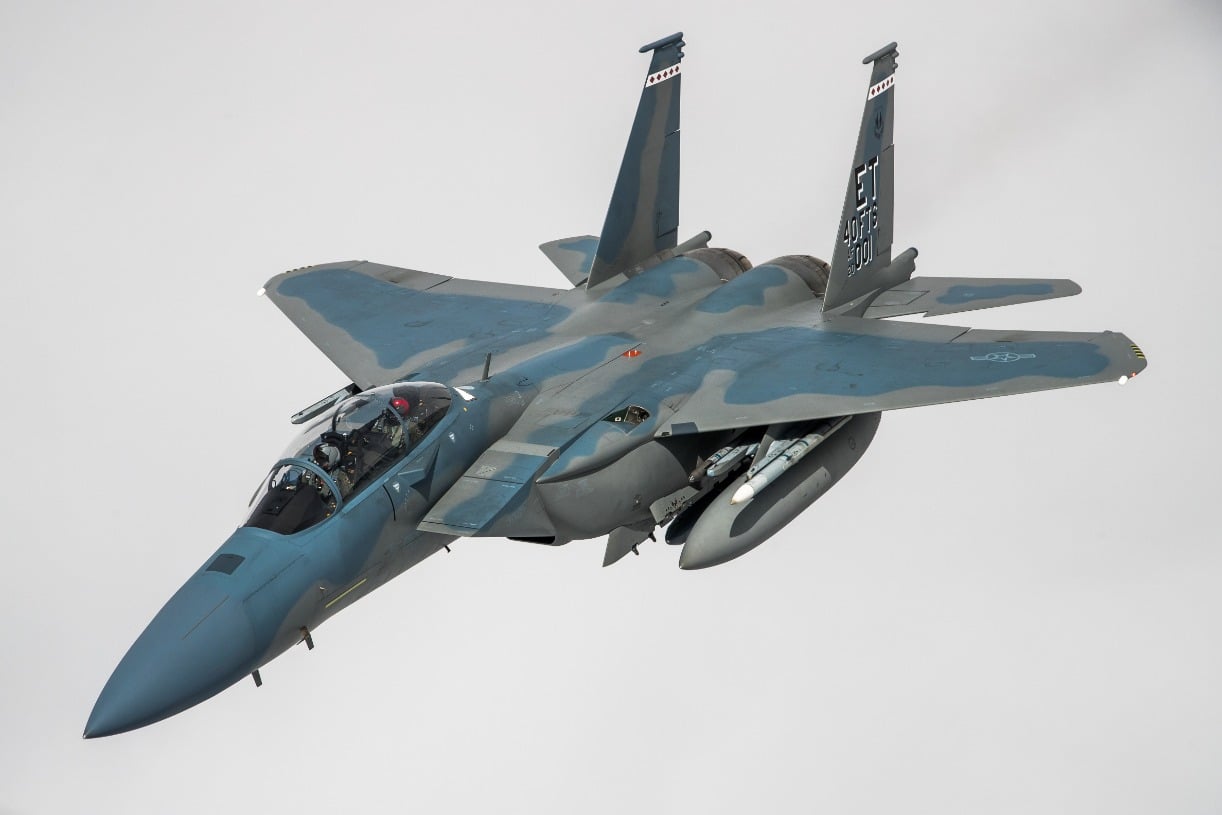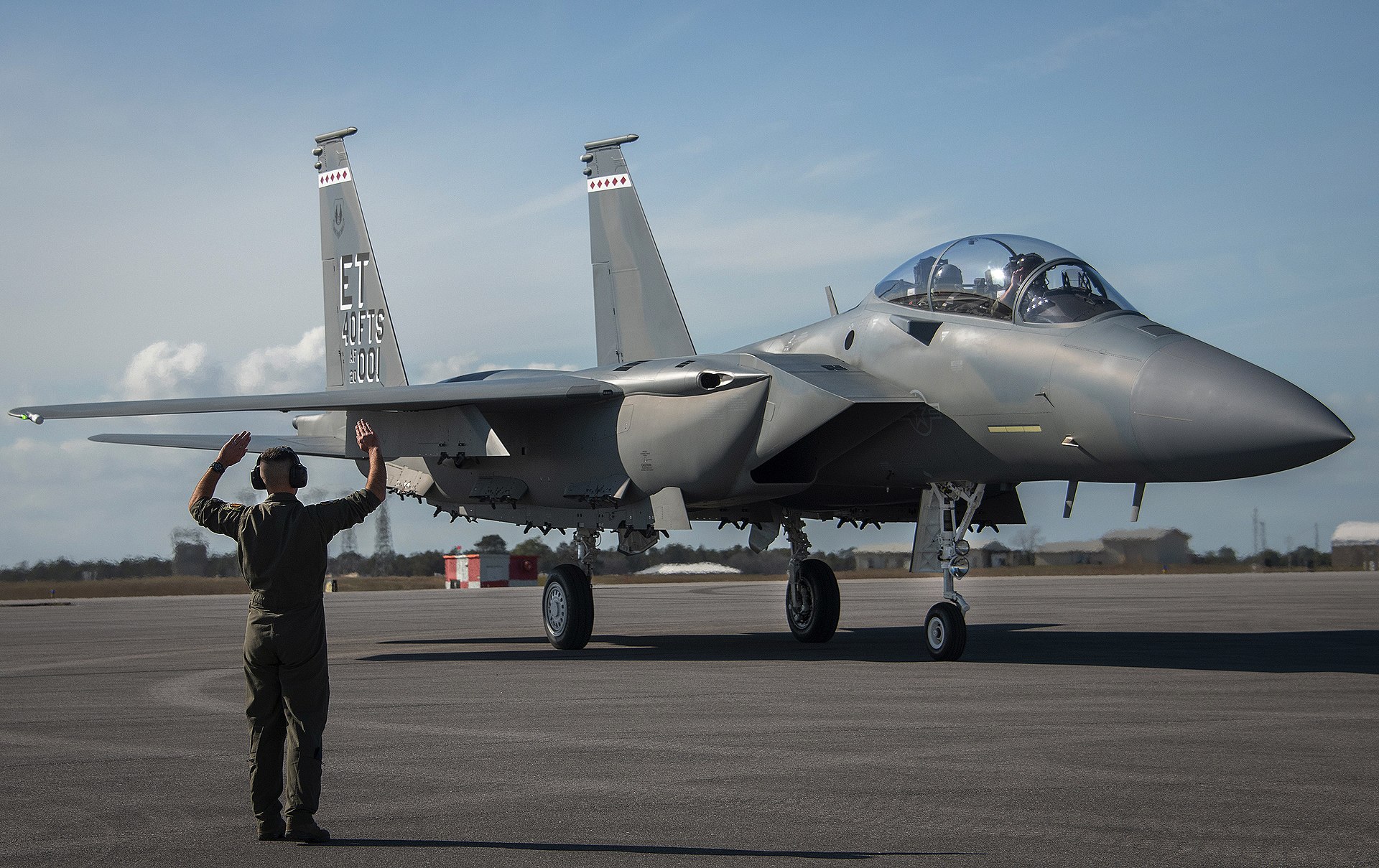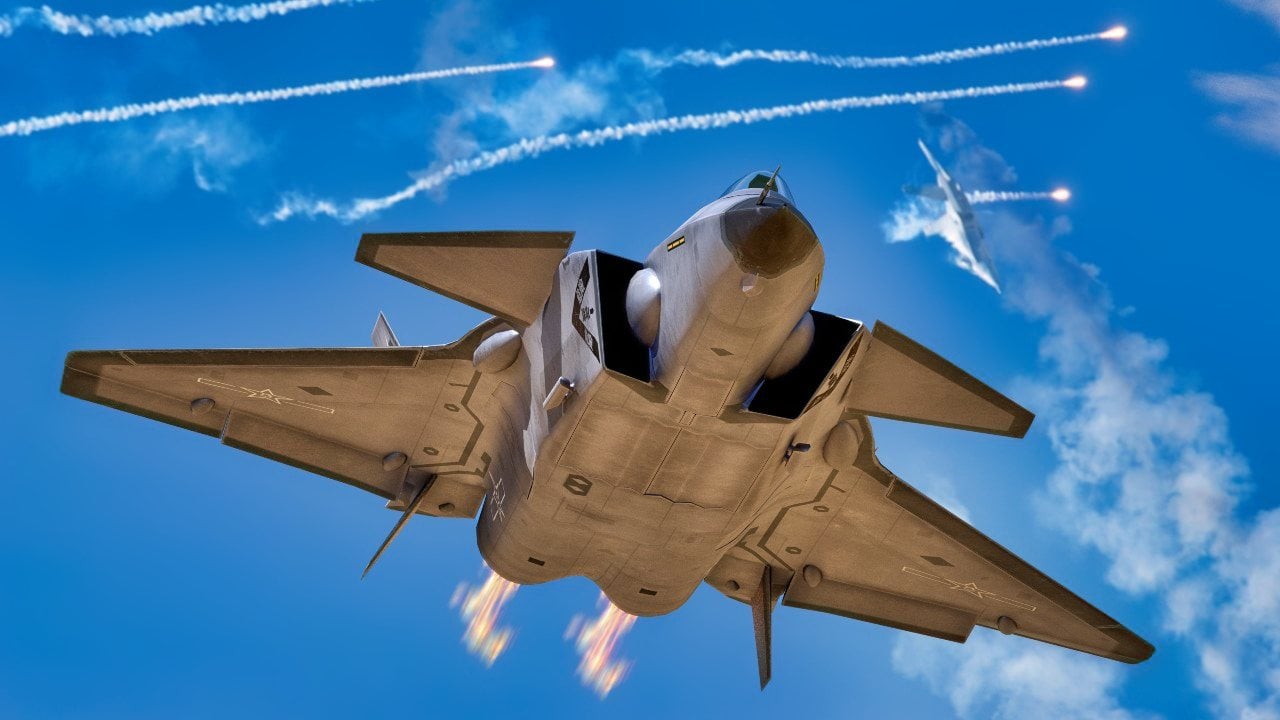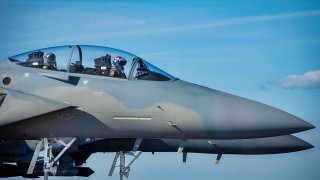China Is Freaked Out: The F-15EX Eagle II Fighter is a Missile Truck Like No Other
The U.S. Air Force's new F-15EX Eagle II addresses gaps left by the premature cancellation of the F-22 and delays in the F-35 program. Though a fourth-generation fighter, the F-15EX serves as a highly capable "missile truck" to counter growing threats from China's J-20 and Russia's Su-57.
Summary and Key Points: The U.S. Air Force's new F-15EX Eagle II addresses gaps left by the premature cancellation of the F-22 and delays in the F-35 program. Though a fourth-generation fighter, the F-15EX is a highly capable "missile truck" to counter growing threats from China's J-20 and Russia's Su-57.

-This decision underscores deficiencies in current U.S. air defenses and the need for a reliable, cost-effective platform.
-Deploying the F-15EX to Taiwan could enhance defensive operations against potential Chinese aggression, ensuring a strategic advantage in critical regions like the South China Sea and the Taiwan Strait.
The F-15EX Eagle II Is Something Powerful
The F-15EX Eagle II is the United States Air Force’s newest warplane. An upgraded version of the plane that first flew the wild blue yonder in 1972, the new version is both an upgrade and a stopgap. At its core, the F-15EX Eagle-II is basically just a missile truck. This new bird can carry significantly more armaments into battle and still be combat-effective.
Yet, it is still a fourth-generation warplane.
In other words, the F-15, which remains a foundational element of America’s airpower doctrine, is now being outclassed both by its own military’s new fifth-generation warplanes, F-35 Lightning II and the F-22 Raptor, as well as by the fifth-generation warplanes of its two main strategic rivals, China and Russia.
Back in 2009, the Obama administration foolishly and prematurely canceled the production of the F-22 Raptor.
For the record, most experts agree that the F-22 is America’s finest air superiority fighter. Cutting it prematurely for budgetary reasons, as the forty-fourth president did, is widely viewed as a mistake. Because now, at a time when America’s rivals either are or, in some cases, have caught up to the US military’s fifth-generation warplane capabilities, the US Air Force has a very limited number of the F-22s.

This places a greater burden on both the existing fleet of fourth-generation warplanes and the still growing F-35 warplanes.
After decades of being in development, the F-35 is finally making some headway with mass production. Although, it is a massively expensive system that requires a great deal of training and expertise to fly, as well as maintain.
Already, the Air Force is looking to develop an even costlier, supposedly more sophisticated sixth-generation warplane to replace the F-35 and F-22—before their fifth-generation warplanes have really proven themselves in the crucible of great power conflict.
Costs of the Fifth-Generation Warplane Have Created a Hole in America’s Defenses
As always, cost is a key limiting factor.
The technical delays and cost overruns of the military’s fifth-generation warplane programs, notably with the F-35, at the same time that the Air Force has been retiring large numbers of its existing fleet of fourth-generation warplanes, have created dire strategic gaps in its defenses. Meanwhile, China and Russia continue to invest in, improve upon, and deploy greater numbers of their own fifth-generation warplanes.
For these reasons, the Air Force opted to spend a fraction of the money that it costs to build new F-35s and introduce a new, upgraded version of its ubiquitous F-15. Lacking the stealth and range—as well as the other high-tech self-defenses—of most fifth-generation warplanes, the new F-15s are, as noted above, essentially missile trucks.
These upgraded fourth-generation systems are designed to fill the void that the decommissioning of, frankly, far too many fourth-generation warplanes and the lack of having adequate numbers of fifth-generation warplanes on hand, at a time when America’s rivals are catching up militarily, created.
In other words, these new planes are a tacit admission by the Pentagon that they screwed up America’s air defenses significantly.
What the Air Force is saying with the introduction of these new F-15s is that, if a shooting war were to start soon, they’d need a reliable weapons platform beyond the costly F-35 and F-22s that there are insufficient numbers of. So, the new F-15s are going to be thrown into the meat grinder against China’s J-20 or, quite possibly, against Russia’s Su-57.
As with America’s F-35 or F-22s, the Chinese and Russian next-generation warplanes could probably fly circles around the Air Force’s F-15s. Since the F-15 remains the primary air superiority platform the Air Force relies on, this poses many risks. To overcome the advantages of individual Chinese J-20s or Russian Su-57s, the new F-15EX Eagle IIs will simply overwhelm targets with a barrage of missiles.
The Serious Limits of the F-15EX Eagle II
Of course, the geography of key regions, notably the South China Sea and the Taiwan Strait, work against the F-15EX Eagle IIs from being deployed in the ways that they have been engaged in the past—especially against the J-20. Instead, these systems would have to stay nearer to their bases because China’s fifth-generation warplanes, like America’s, have advantages over longer-ranges.

For the F-15EX Eagle II to have the kind of impact it needs to have, I would recommend handing these systems over to the Taiwanese and having Taiwan’s air force use them for defensive operations around Taiwan to harry Chinese warplanes, bombers, and warships, when the inevitable Chinese invasion (or blockade) starts.
About the Author:
Brandon J. Weichert, a National Interest national security analyst, is a former Congressional staffer and geopolitical analyst who is a contributor at The Washington Times, the Asia Times, and The-Pipeline.
All images are Creative Commons and or Shutterstock.


